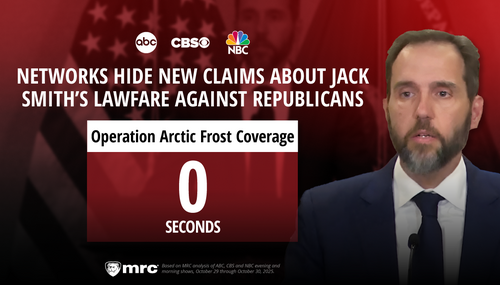The National Oceanic and Atmospheric Administration somewhat under the radar a few weeks ago rebutted Nobel Laureate Al Gore's claim that January's heavy snowstorms across the country were caused by global warming.
As readers might remember, the man that has been made rich advancing the myth that carbon dioxide is destroying the planet weighed in on the inclement weather at his blog on February 1:

As it turns out, the scientific community has been addressing this particular question for some time now and they say that increased heavy snowfalls are completely consistent with what they have been predicting as a consequence of man-made global warming:
“In fact, scientists have been warning for at least two decades that global warming could make snowstorms more severe. Snow has two simple ingredients: cold and moisture. Warmer air collects moisture like a sponge until it hits a patch of cold air. When temperatures dip below freezing, a lot of moisture creates a lot of snow.”
“A rise in global temperature can create all sorts of havoc, ranging from hotter dry spells to colder winters, along with increasingly violent storms, flooding, forest fires and loss of endangered species.”
A week later, NOAA posted the following article at its Climate Watch magazine (h/t Yid With Lid):
This is the second consecutive very wintry winter in the eastern United States. Last year, NOAA climate scientists concluded the record-breaking snowstorms most likely resulted from the combination of two natural climate patterns: El Niño and the Arctic Oscillation.
So what about this year? Last winter’s El Niño has flipped to La Niña, as temperatures in the eastern tropical Pacific have been cooler than normal. But the Arctic Oscillation seems to be in a repeat pattern, with conditions this December and January very similar to last winter, according to Deke Arndt, Chief of the Climate Monitoring Branch at NOAA’s National Climatic Data Center.
For those unfamiliar, the National Snow and Ice Data Center defines Arctic Oscillation thusly:
An atmospheric circulation pattern in which the atmospheric pressure over the polar regions varies in opposition with that over middle latitudes (about 45 degrees North) on time scales ranging from weeks to decades. The oscillation extends through the depth of the troposphere. During the months of January through March it extends upward into the stratosphere where it modulates in the strength of the westerly vortex that encircles the Arctic polar cap region. The North Atlantic Oscillation and Arctic Oscillation are different ways of describing the same phenomenon.
So, apart from there being a La Nina this year versus an El Nino, conditions this December and January were "very similar to last winter."
And what did NOAA say about the snowy winter last year (h/t Climate Depot)?
Shortly after the third of three major snowstorms brought record-setting snowfall to the U.S. mid-Atlantic region, NOAA’s Climate Scene Investigators (CSI) assembled to analyze why the snowstorms happened. The CSI is a team of “attribution” experts in NOAA whose job is to determine the causes for climate conditions. By distinguishing natural variability from human-induced climate change, they aim to improve decision-making and inform adaptation strategies.
The CSI team was formed in 2007, following chaotic media coverage of the record U.S. warmth in 2006 (see CSI: NOAA Climate Scene Investigators). Here they have been called to the scene again, but now to explain cold, snowy conditions, and to reconcile those with a warming planet. After a series of record-setting snowstorms hit the mid-Atlantic region this winter, some people asked NOAA if humans could somehow be to blame. Specifically, they wanted to know if human-induced global warming could have caused the snowstorms due to the fact that a warmer atmosphere holds more water vapor.
The CSI Team’s analysis indicates that’s not likely. They found no evidence — no human “fingerprints” — to implicate our involvement in the snowstorms. If global warming was the culprit, the team would have expected to find a gradual increase in heavy snowstorms in the mid-Atlantic region as temperatures rose during the past century. But historical analysis revealed no such increase in snowfall. Nor did the CSI team find any indication of an upward trend in winter precipitation along the eastern seaboard.
The CSI team turned its attention to natural factors that control the ordinary ups and downs of weather. Many extreme weather events are due to cyclical, large-scale anomalies in air pressure and sea surface temperature across large tracts of ocean. Such fluctuations spawn weather systems that can cause droughts, floods, and massive snowstorms. While El Niño is the most famous, scientists have identified other climate anomalies throughout Earth’s climate system as well. Their names may seem unimpressive — the Arctic Oscillation, North Atlantic Oscillation, Pacific Decadal Oscillation, to name a few — but they can pack quite a punch!
As NOAA in this year's report said "the Arctic Oscillation seems to be in a repeat pattern" from last year, let's focus on the portion of their 2010 study dealing with that:
The North Atlantic Oscillation is a fluctuating air-pressure pattern that alternatively enhances or blocks the storm-steering jet stream over North America. So the NAO is particularly relevant in understanding eastern U.S. wintertime climate variations. The NAO describes the contrast in surface air pressure between Iceland and the Azores as well as the vigor of the jet stream that normally flows between them.
This winter the NAO was in its negative phase and the jet stream flowed further south than usual, pushed toward the Azores by a massive “block” of high surface pressure over Greenland. It’s an unusual atmospheric circulation pattern, but one that has been implicated before. For example, remarkably cold winters persisted over Europe and Russia in the early 1940s, helping to turn the tide of World War II. The NAO, in a blocked phase, was one conspirator in those cold events. Likewise, the CSI Team suspected the pattern was a co-conspirator in the extreme winter weather conditions this year in the mid-Atlantic region. But could they find the evidence they would need to finger El Niño and NAO?
[Editor's note: There is ongoing discussion among scientists as to which of the climate patterns is a more meaningful description of real-world conditions — the Arctic Oscillation or the North Atlantic Oscillation? While these phenomena are measured using different indexes, their values are so highly correlated that some scientists use the terms interchangeably, referring to them together simply as “AO/NAO.” Both AO and NAO were at record lows this winter.]
By January, scientists worldwide were already abuzz about the extremely low values for the NAO index. The NAO, first discovered by British atmospheric scientist Sir Gilbert Walker in the 1920s, has been extensively studied, and its affect on U.S. snowfall is clear: When the NAO index is negative, or “blocked,” snow can pile up along the East Coast. At the atmospheric steering level for storms, high-pressure systems develop over Iceland and Greenland while low pressure builds over the central North Atlantic. This situation redirects the tracks of surface weather systems that are conducive for cold and snow toward the mid-Atlantic coast. Winter precipitation along the eastern seaboard is often in the form of rain, but in a blocked NAO pattern, temperatures can drop low enough to create snow instead.
Historical snowstorms affirm the link. In Baltimore and Washington, D.C., thirteen of the fifteen heaviest snowstorms since 1891 occurred when the NAO index was negative. And case studies of infamous Northeast U.S. storms over the last century, summarized in a Monograph of the American Meteorological Society, have discovered a link to blocked NAO conditions.
The CSI team took its analysis a step further, mapping out historical climate conditions associated with the ten snowiest Decembers, Januaries, and Februaries since 1891. The 30-month composite map of jet stream level and surface conditions revealed a textbook picture of a blocked NAO pattern over the Atlantic Ocean.
Readers are once again reminded that on February 8 of this year, after the nation had experienced crippling snowstorms in the midwest and northeast, NOAA reported "the Arctic Oscillation seems to be in a repeat pattern, with conditions this December and January very similar to last winter.
Hence, and not at all surprisingly, the man that just this past Friday accused Rush Limbaugh, Fox News, and the Wall Street Journal of being part of a conspiracy to mislead people about the dangers of manmade global warming was once again guilty of it himself.
Why anybody takes this charlatan seriously is beyond me.




